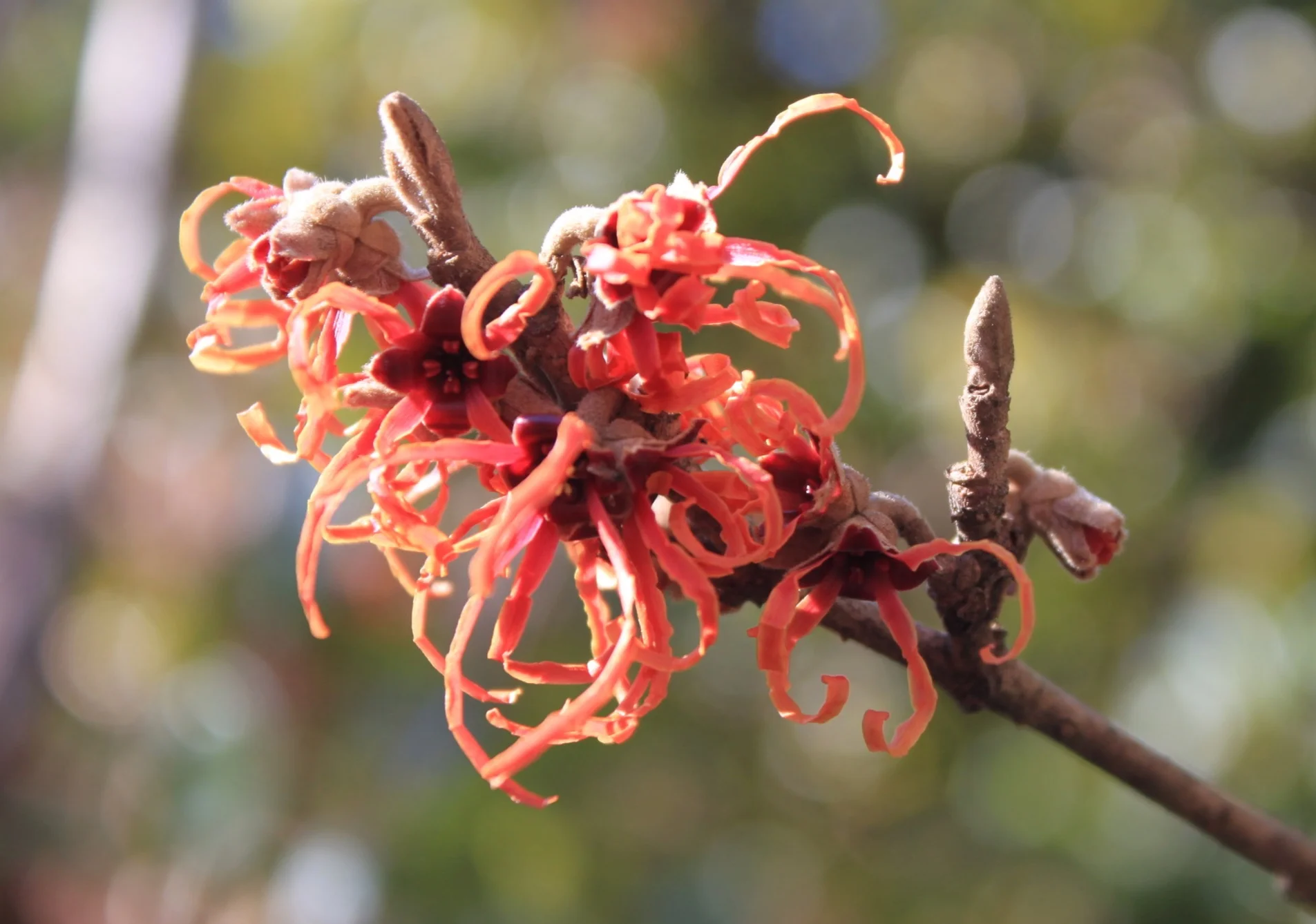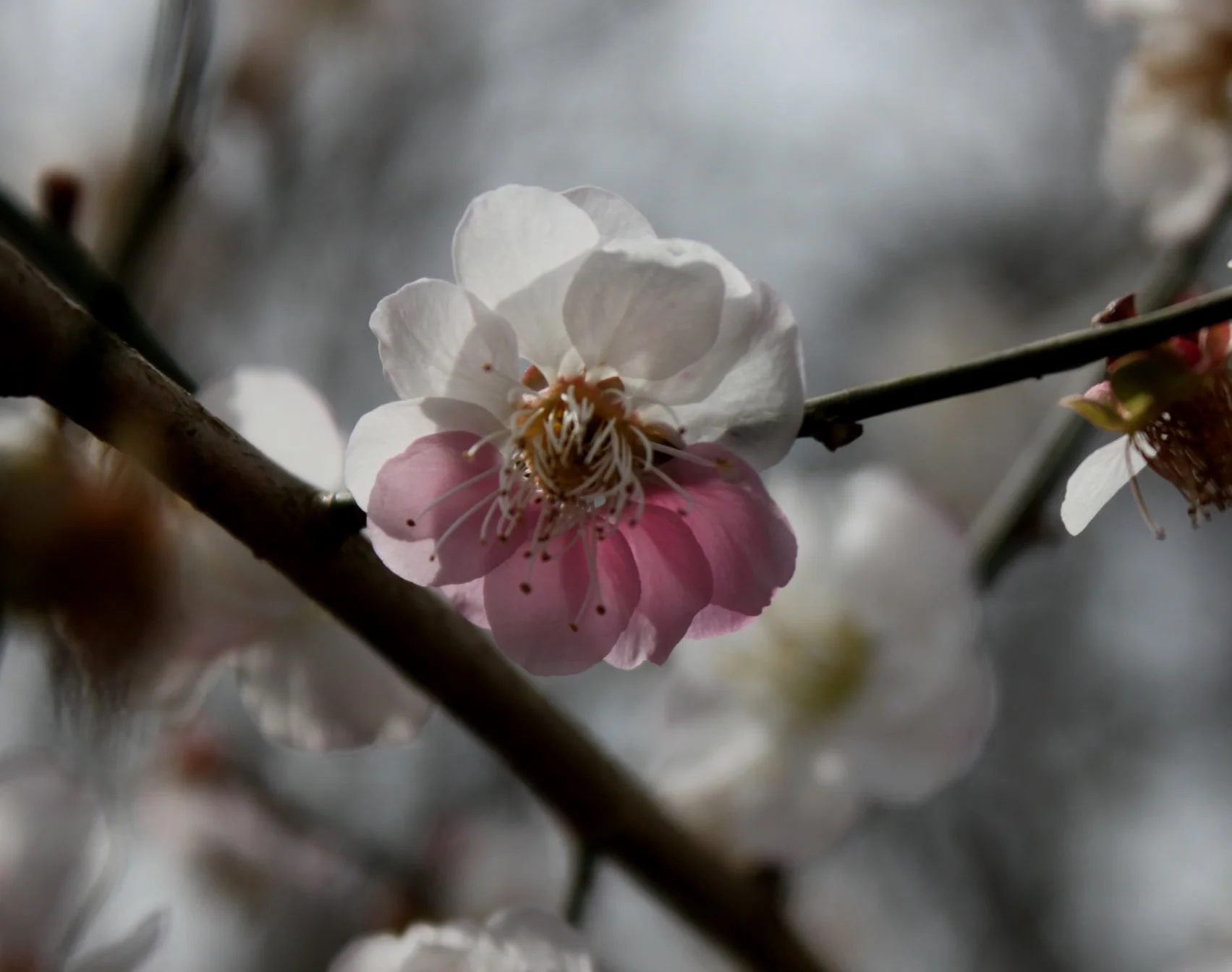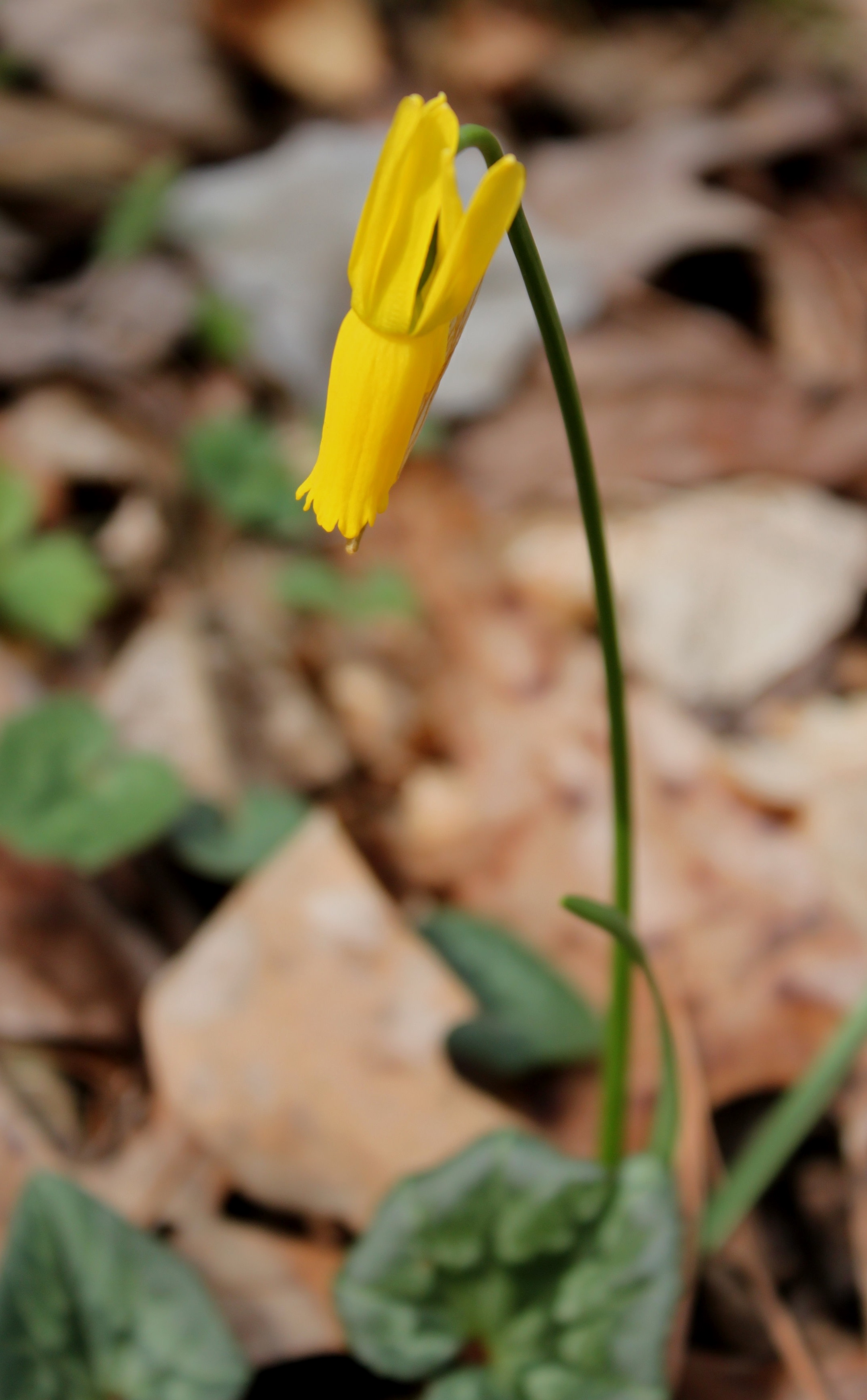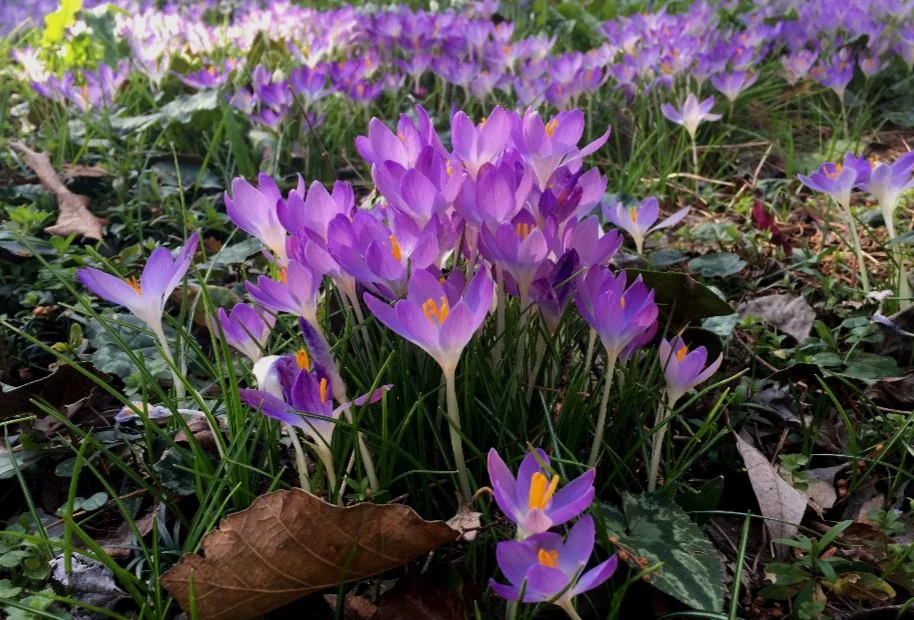Late Winter
Hamamelis x intermedia ‘Jelena’
In February, we expect to see the peak of our winter flowers and this year is no exception. Witch hazels are in full bloom and best viewed when backlit with the sun. Hamamelis x intermedia ‘Jelena’ can look dull when seen up close on a cloudy day, but brilliant when the sun shines through its wispy orange petals. H. mollis ‘James Wells’ retains its leaves but brightens the driveway edge with fragrant yellow flowers.
Prunus mume ‘Nancy’
The late snowdrops don’t match the earlier displays at Montrose, but a large planting of Galanthus gracilis produces a gentle flow of twisting gray green leaves and small, but numerous flowers. Large drifts of unnamed varieties give us one last excuse to crawl about and look for “the different ones” to transplant for increase and future drifts. Most of the double flowered forms are late to open their green and white petals often with intricate patterns such as those on G. nivalis ‘Blewbury Tart’. Many Prunus mumes produced fragrant flowers throughout January and February although some of the flowers were ruined by cold nights while others were discovered more by their incredible fragrance than by their flowers.
Magnolia x ‘Donna’
Magnolia x ‘Donna’ just cannot wait for spring and has many opened flowers. We know the next freeze will turn them brown but we finally learned to be grateful for little blessings and enjoy them whenever they open. Colchicum hungaricum ‘Valentine’ bloomed right on schedule and remains full of elegant, small lilac flowers with more buds yet to open. Throughout the woods many hellebores are at their peak, so we continue to pollinate some of our favorites—mostly species.
Narcissus cyclamineus
Tiny Narcissus cyclamineus requires a special visit in order to see its tiny flower. We had to have the daffodil shaped like a cyclamen, although increasing it is difficult. The small, but profuse Crocus tommasinianus has seeded into the lawns, woodland paths, and throughout the rock garden. Most often we leave them where they choose to grow, but we rescue those in the lawn and plant them in the woods where they grow and bloom with cyclamen, hellebores, and the last of the aconites.
Crocus tommasinianus
Jasminum nudiflorum
Jasminum nudiflorum, January jasmine, has been very slow to open this year. I found only one flower on Christmas day so it seems more like a February jasmine this year. We are about to reduce the size of our hedge, which has insinuated itself into an adjacent bed filled with sternbergias and into the lawn near the garage, thereby almost closing the path. It is time for editing!
The great white oak is slowly coming to earth thanks to Gary and David, who carefully cut the wood into small chunks and lower it with a crane. They discovered a cluster of rocks in the interior of the tree about 30’ above ground with solid wood above and below but rotted wood and debris in the middle. We cannot imagine how that happened. We can feel the approach of spring with winter weeds going to seed, longer days, and spring flowers in bud





